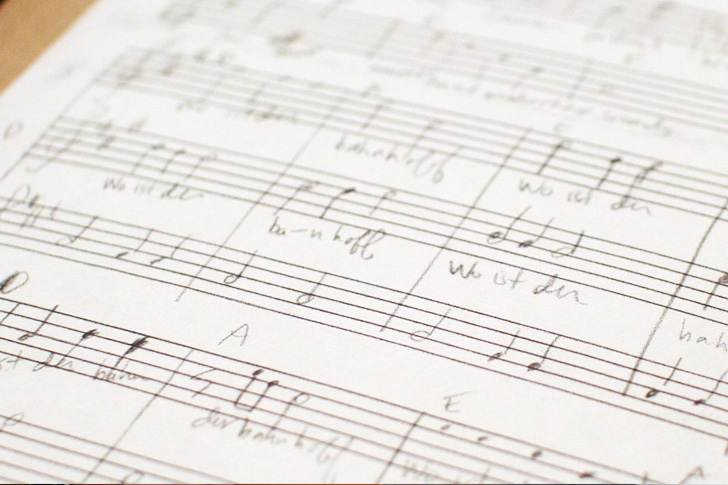Making Melodies With Six Simple Steps
Have you ever had that burning desire to write down your thoughts into a song but you just don’t quite know where to start? You’re not alone. Several people actually suffer from the same frustration. After all, it’s not like composing and writing music is as easy as singing ABC. Writing the lyrics alone requires a lot of thought and depth, and unless it’s something you feel very passionate about, it won’t come out quite as good. Then, of course, there’s the melody. To a certain degree, composing a melody is hard. You really would not find it easy unless you’re born with exceptional musical talents. Even then, you might still encounter the occasional artist block. Thankfully, several experts have shared their techniques in overcoming that ever-present difficulty of creating new music. What’s more exciting is that you can actually compose one with only six simple steps. If you’re interested in trying these techniques for yourself, then keep reading.
SET THE TONE

Before you can begin with anything, there are a few things to consider first. What tools/instruments will you be using? Will this be a piece with lyrics? And what will this song be about? It’s important to ask yourself these questions before starting anything as they will determine the direction of your songwriting process and will, therefore, guide you in the right direction.
Experts suggest that for your process to be smooth, you must consider the type of instrument you will be using. You must use instruments you are most comfortable with as they will allow you to have full creative control. So go ahead and spend that investment money on your favorite instrument. It’ll be worth it in the long run.
Another thing that you must consider when writing your music is whether or not it will have lyrics. Once you have that out of the way, then it’s time to conceptualize the tone of your song. This will ultimately help you build the emotional foundation of the piece you’re working on.
BUILD YOUR FRAMEWORK

Once you have the first two steps nailed down, it’s time to start building your framework. Don’t stress out if you don’t have a concrete plan yet. Even the best of the best run into a few creative blocks once in a while. What you need to do in situations like that, however, is to keep moving. Start by simply playing around with some sound combinations and record or write them down. Don’t get too caught up with specific parts right away. That’s a sure-fire way to get stuck. Just keep on experimenting with sounds, and once you get an idea somewhere along the way, go back to some of your pre-recorded or pre-written ideas and build your song from there. Songs, after all, are investments of time and effort, so don’t feel bad if you don’t get it right away.
CHOOSE AN IDEA

Out of all the steps in songwriting, this one has got to be the most challenging. But don’t get discouraged yet. Everyone knows it’s hard to weave ideas from thin air, so take your time and gather your thoughts.
To execute this step, begin by finding an idea or an inspiration that will be the central focus of your song. Look through your previous recorded melodies and find which part of those compositions speaks to you the most. It can either be a chord progression, a hook, a chorus, or anything that quenches your creative juices. Work with that and start building the verse, chorus, and bridge sounds of your song. You surely deserve some credit once you’ve accomplished this step, so make sure to pat yourself on the back.
BEEFING UP YOUR WORK

So you’ve set the tone, you’ve built your framework, and you’ve chosen an idea. What’s next? Now it’s time to put more weight into your music. It’s time to organize your draft and turn it into something more structured. For this step, you will have to fill the gaps of your song with specific details like lyrics, melodies, or adlibs. You also need to consider the genre that your song belongs to. By doing so, you’ll be able to speed up the process of filling in the gaps by a large degree because you already know the type of structure ( e.g. intro, verse, chorus, verse, outro) to use. Once you’re happy with the outcome of this step, you can trust that it will be smooth sailing from here on out.
WRITE YOUR LYRICS
Now that you have the basics of your song all figured out, it’s time to get your message across. This step is pretty straight forward, but we do understand that it still has some degree of difficulty attached to it. So if you’re someone who finds it hard to be poetic, the best advice we can give for this step is to keep things simple. You don’t have to conjure up incredibly deep words to make your song powerful. All you need to do is write down some lyric ideas and find where they fit in your sketch. If what you’ve written sounds like the focal point of the song, then maybe consider putting it within the chorus. If not, then find a place for it somewhere in your intro or maybe along with the verses.
WRAP IT UP
You’ve made it to the last step. Congratulations! You surely deserve some credit for your hard work, but let’s polish your song first. However, unlike the previous steps, this one process does not have a clear route. This time you have free reign over the direction of where your song is going. But just because this step does not have clear directions doesn’t mean it’s not as crucial as the others. It still is, and it might just be the most important step of all. Since this is the part where all your ideas come together, it’s crucial that you take your time to sit and work on the finishing touches of your song. Nobody wants to release a mediocre piece of art into the world, so sit with it and don’t let it see the light of day unless you are happy with the outcome.
